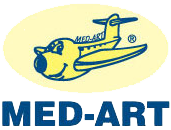The ORFEUS corporate information system has been developed for the IBM i operating system, and its technology is based on terminal architecture. Both of these characteristics produce great advantages for end-users as well as for application administrators.
Architecture of the ORFEUS information system
The ORFEUS ERP IS is built on terminal architecture. This means that all calculations are performed directly in the server, and work-stations function solely as user terminal interfaces.
A great advantage of applying the terminal solution is the simplicity of protection against power outage. The terminal solution requires a back-up power source for the server alone, whereas in the case of client – server architecture, all work-stations must be backed up.
The ORFEUS IS platform
The working principle of application program systems operating on the IBM i platform is that they make use of on-line access to a centrl server where all data are stored. Users can be connected to the central server either through a local computer network, or in the case of remote clients through WAN.
The advantages of building the ORFEUS ERP system on the IBM i platform include:
- Standard input/output interfaces
The IBM i system has built-in standard interfaces enabling integration with any desired external system:
- interconnection with ORFEUS modules dealing with maintenance management (Machine Maintenance Management), document management (eRegis, electronic registry administration), or production management,
- interconnection with 3rd party systems: PaM (Athos, s.r.o.), NAUTILUS (NRSYS, s.r.o.), System 21 Aurora (Geac), Sage ERP X3 (SAGE), PaM (Softip), Human (Hour, s.r.o.), EcoSun(SunSoft Plus s.r.o.), Infor and SAP solutions, XPPS systems, electronic business and the like,
- interconnection with MS Office and LibreOffice.
- Possibility of batch processing of inputs
- Possibility of creating documents and statements in several languages
- Renewal of previous data versions
The ORFEUS IS allows batch processing of data from external system sources, as well as automatic book entries in line with pre-defined transfer parameters.
Documents and statements can be prepared and printed out in any desired language depending on the setting defined during implementation of the system.
One of the system components is the so-called journal of changes, where a chronological record of changes in data is stored. The purpose of this journal is to provide the information needed for reconstruction of previous versions of the data.
If as a result of hardware or software failure, an abnormal system shut-down occurs, the database files recorded in the journal are automatically renewed on system restart. The IBM i system also provides referential integrity of data, that is it maintains data consistency between several physical files in accordance with defined rules.








